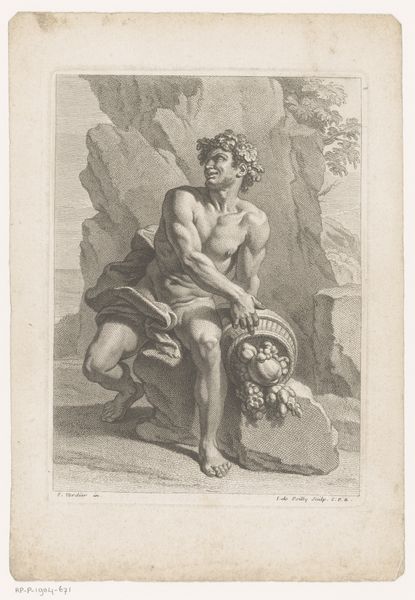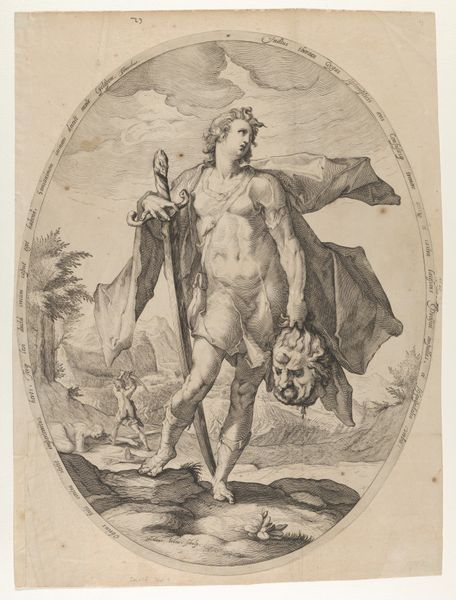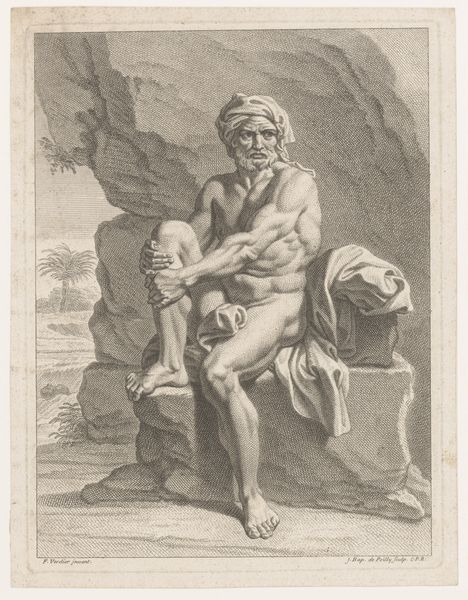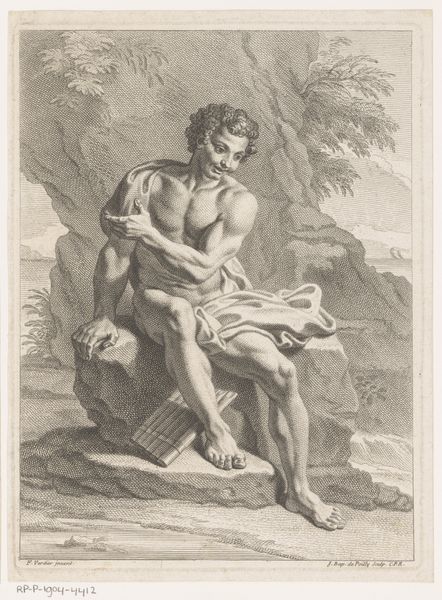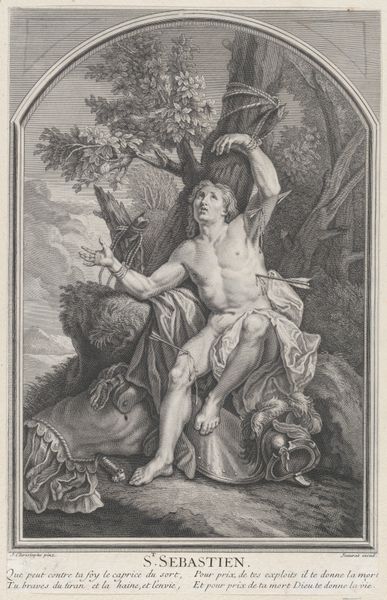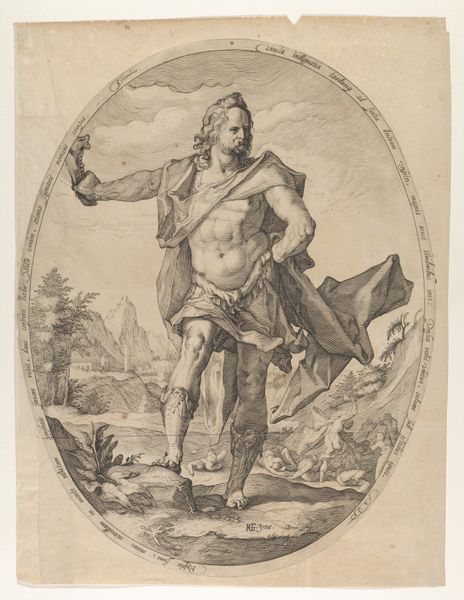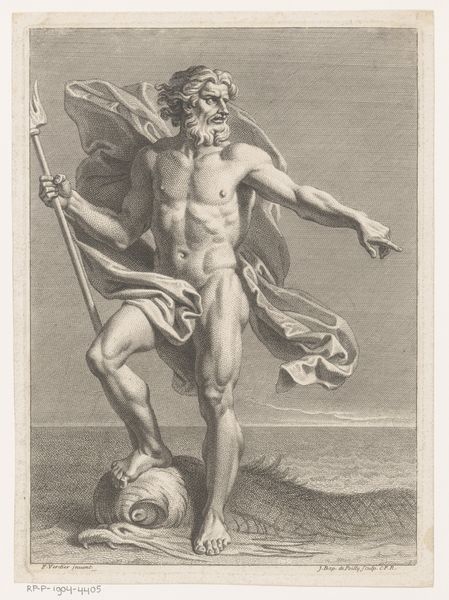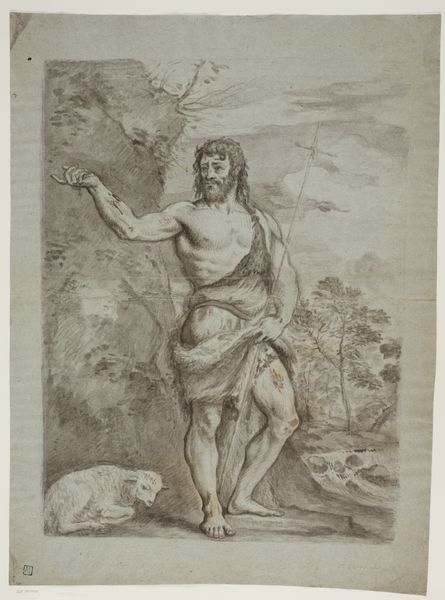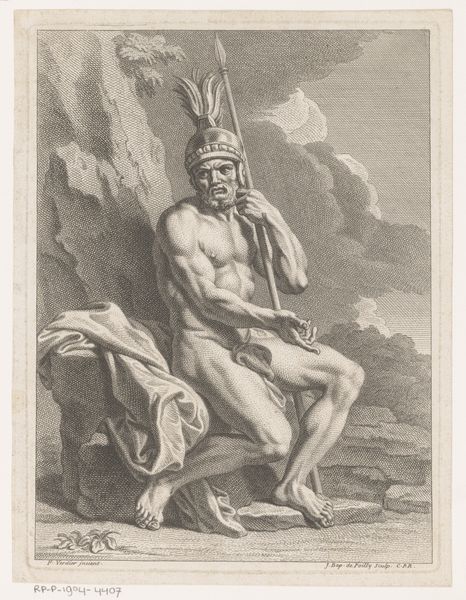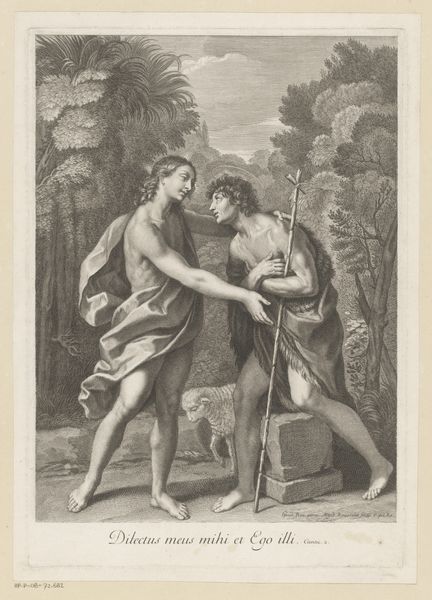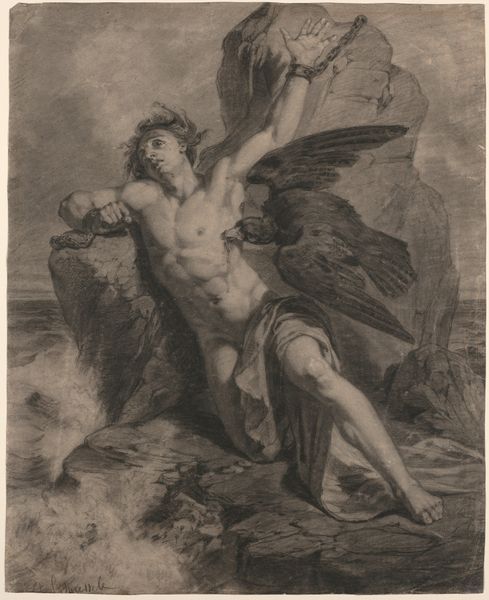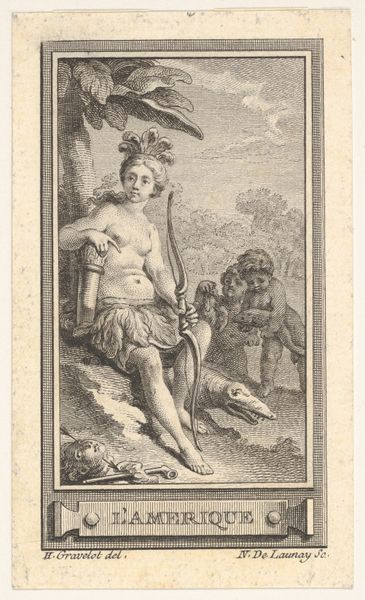
Saint John the Baptist in the desert, seated on a rock and pointing upward with his left hand, a lamb at his right, after Reni 1770
0:00
0:00
Dimensions: Sheet: 23 in. × 15 5/8 in. (58.4 × 39.7 cm)
Copyright: Public Domain
Curator: This print from 1770 by Pedro Pascual Moles depicts Saint John the Baptist in the desert, following the style of Guido Reni. Editor: It's a very classical composition, isn't it? John the Baptist in the wilderness – I immediately notice how dramatically he points upwards, as if conveying a prophecy. The starkness is palpable. Curator: Exactly! The figure and its accompanying lamb offer viewers strong religious symbolism, resonating deeply with the story of sacrifice and spiritual purity that was very on trend during the Baroque period. We should remember these symbols have echoed across centuries and carry tremendous cultural weight. Editor: Yes, but how interesting that this reproduction exists. The labour involved in translating a painting into an engraving implies accessibility; these prints brought religious and historical narratives to a wider audience than those who could afford or access an original oil painting. Curator: True, the medium shifts the message’s delivery and also allows to look at continuity across cultures and religions. Think of the lamb in different contexts—the golden fleece of the Argonauts, for instance, that may appear on Reni’s patron’s shield. Editor: Well, look closely – see the careful use of line and cross-hatching to create tonal variation and simulate the effects of light on skin, stone, and foliage? This painstaking craftsmanship elevates the reproductive print from mere imitation to a work of art in its own right. Curator: Absolutely, and the gaze also contributes a powerful symbolic message, with the way the hand is placed and the gaze turned upwards speaks volumes. Editor: What really interests me is how a drawing, which begins with immediacy of gesture, is translated through reproductive technology that necessitates layers of intervention before achieving the final print. It becomes another iteration of craft. Curator: Considering the intricate details in his posture, that interpretation brings fresh insight. The history imbued within these images has lasting psychological resonance, doesn’t it? Editor: Indeed. And thinking about the tangible means of its production forces me to ask different questions about value. Thanks to both craft and devotion!
Comments
No comments
Be the first to comment and join the conversation on the ultimate creative platform.
